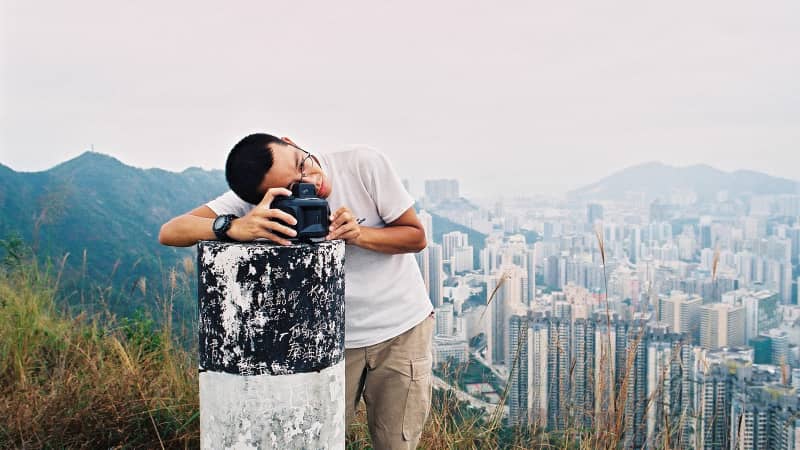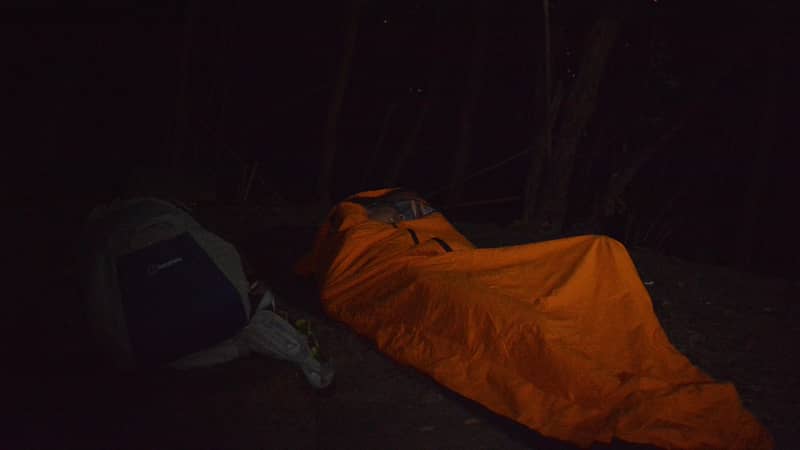Hong Kong (CNN) — Surrounded by photos, maps and other documents, 45-year-old photographer Simon Wan Chi-Chung is planning his next great Hong Kong adventure.
This is no weekend getaway. He’s going to climb every peak in Hong Kong — in one trip.
It won’t be his first try, either. He’s made the attempt several times over the last two decades.
There isn’t a single, definitive list stating the exact number of peaks in Hong Kong. So Wan has drafted his own route based on various sources as well as his own research of official Hong Kong topography maps.
But his condition didn’t improve, the added days of hiking and camping only exacerbating the pain in his ankle.
“I was young and arrogant, wanting to prove that I could do everything and ended up hurting myself,” Wan tells CNN Travel.

Simon Wan Chi-Chung, artist and photographer, is now planning his next great Hong Kong adventure.
Maggie Wong/CNN
But an encounter with a fellow hiker — an older man he met earlier that morning — gave him a new perspective. As the two acquaintances made it to the peak, they saw the rolling hills in front of them.
“This ‘Day 9 uncle’ gasped when he heard about my mission to climb all of Hong Kong’s peaks,” recalls Wan.
“He gave me his slice of bread and said, ‘young man, you’re going to need this more than I do.’ He grabbed an orange from his bag and repeated, ‘You need this more.’ It was such a simple gesture. But I stopped feeling pity for myself. I let go of my arrogance and felt humbled by the mountains.”
With a heavy heart and a swollen ankle, he decided to press pause on the journey. Wan went home to nurse his foot for three weeks, then finished climbing the rest of the 148 peaks on his list a few weeks later.
It was one of his most memorable encounters and one of the reasons he’s devoted to Hong Kong’s natural world.
“On the hills, people are more likely to talk and connect,” says Wan.
“You won’t have that experience in the city. Nature makes people feel comfortable and secure.”
‘Hong Kong is a city hidden within wilderness’

Wan prefers to work with film. He used a panorama camera for his expedition in 2003.
Simon Wan Chi-Chung
In addition to its 148 hills, Hong Kong is also home to more than 100 island clusters made up of over 250 individual islands. Wan claims to be one of the few people to have visited every one of them, saying he’s always wanted to become an adventurer.
Having spent years studying in the UK, Wan realized he didn’t know Hong Kong’s landscape very well.
An idea hit him: “Why not explore every single hill in my own backyard? And why not do that in one go?”
Carrying a bivvy bag and a film camera, Wan embarked on a series of “expeditions.” Ten years after his first trek through Hong Kong’s mountains in 2003, he repeated the journey in 2013.

Rather than set up a tent, Wan slept in a bivvy bag during his quests to visit all of Hong Kong’s peaks.
Simon Wan Chi-Chung
But this time, he was under a tighter schedule so he opted to only tackle the peaks that were at least 300 meters tall.
Trekking 26 to 30 kilometers, or 11 to 12 hours, per day, he reached 134 peaks in 19 days, camping in different parts of Hong Kong along the way.
He titled the works from these trips “Post Urbanisation.”
Then, in 2015, he voyaged to 107 uninhabited island clusters, traveling by canoe, in 11 days. “These were ‘hills’ I hadn’t climbed as well,” he says.
“These days, you know about the place before getting on a plane — you’ve booked a hotel, seen photos online, or even know what restaurants to book before leaving your home. In these journeys, I’ve been to places I’d never heard of and villages I’d never seen. You wouldn’t find much information about some places online.
“It turns out, I don’t need to visit Mount Everest or a foreign country to find that excitement and happiness of explorations and adventures.”

“On the hills, people are more likely to talk and connect,” says Wan.
Simon Wan Chi-Chung
Mountain and island names unfamiliar to most Hong Kongers roll off Wan’s tongue as he retells anecdotes from his trips.
He says he learned the history of Ap Chau, a rugged island in the northeastern part of Hong Kong, during an impromptu tour from a persistent retired villager who found Wan sleeping at the pier one morning.
He visited the memorial plate for Quentin Roosevelt II, Theodore Roosevelt’s grandson, on Basalt Island, where Roosevelt was killed in a plane crash in 1948. It’s a part of the city’s history not written in many textbooks.
“It may be an old adage, but Hong Kong’s nature is unique for its convenience,” says Wan. “No matter where you are, there is always a hill behind you. You don’t have to plan anything or ask for a day off. You can just go at lunch.
“People say there is great wilderness within Hong Kong. I say it is the other way around — Hong Kong is a city hidden within the wilderness.”
Wan has plenty of advice for those wanting to start exploring Hong Kong’s wild spaces as well.
“Whether you’re a waterfall climber or a leisure walker, there is a route for you,” he says enthusiastically. “Most of the hiking trails are well-paved with signs and facilities along the way — so it really is for everyone.”
A stone’s throw away from the popular Victoria Peak (or The Peak), it offers a quick taste of Hong Kong’s natural beauty but is right next to a vibrant business center.

Mount High West is only a stone’s throw from popular tourist destination The Peak.
Simon Wan Chi-Chung
Meanwhile, Lion Rock Hill, on Hong Kong’s Kowloon side, gives “an unbeatable view of Kowloon,” with trails suitable for every type of hiker.
Nature as an emotional platform
Capturing the beauty of Hong Kong’s natural side is more than just a photo assignment for Wan. It’s an outlet for him to express his emotions as well.
While going through a painful divorce in 2011, he says he hiked up a different mountain each day he couldn’t see his then two-year-old son.
“I’d take a photo towards the direction of where he was,” says Wan. “Maybe he’d happen to look my way at that moment. Then, we’d be looking at each other. I’ve one copy of the journey at the Heritage Museum and I’ve one copy here for my son, so he’d know that I never gave up on him.”
On his 2013 hike around Hong Kong, as well as his island-hopping trip in 2015, he used a Holga — a made-in-Hong Kong film camera with limited functionality.

Wan used a Hong Kong-designed Holga camera on some of his trips.
Simon Wan Chi-Chung
“I knew before my trips that the Holga camera wouldn’t be able to yield ideal results,” Wan explains.
“But I wanted to use the camera as a metaphor for myself. I’d persevere and I wouldn’t change as an artist. At the same time, I acknowledge that the environment is something I couldn’t control so I had to let go.”
Wan’s next Hong Kong hill expedition will happen this summer.
“I hate Hong Kong’s summer — it’s humid and hot and festered with typhoons. But I want to make the journey as challenging and memorable as possible so I’ll remember deeply how unique Hong Kong’s summer is,” says Wan.
“Some people get wasted when they need to release their emotions. I go into the mountains during my ups and downs. I think there is no difference. I love my home — I love this land. That’s why I am so devoted to this project. I think I will spend my lifetime doing this if I can.”
